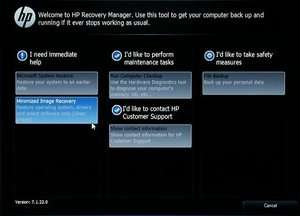
Multiple old passwords can be specified (separated by a comma). OldSetupPassword – The old setup password(s) to be changed.
HP POWER MANAGER DEFAULT PASSWORD PASSWORD


This method allows for changing HP BIOS settings. The HP_BIOSSettingInterface WMI class contains a method called SetBIOSSetting. $Interface.SetBIOSSetting("Setup Password","","" + "OldPassword") $Interface.SetBIOSSetting("Setup Password","" + "NewPassword","" + "OldPassword") $Interface.SetBIOSSetting("Setup Password","" + "NewPassword","") $Interface = Get-WmiObject -Namespace root/hp/InstrumentedBIOS -Class HP_BIOSSettingInterface #Connect to the HP_BIOSSettingInterface WMI class This information can be obtained from the HP_BIOSSetting WMI class under the root/hp/InstrumentedBIOS WMI namespace. The first thing that needs to be done is to determine what passwords are currently configured. This script deals specifically with HP BIOS passwords, so in this post, I will only be discussing the classes related to password management. This means that we can use PowerShell to directly view and edit BIOS settings without the need for a vendor specific program. HP provides a WMI interface that can be used for querying and modifying BIOS settings on their hardware models. The script can be downloaded from my GitHub. In this post, I’ll cover the basics of how the script works and some limitations of the script.

Once again, the goal was to have a script that could automatically set, change, or clear BIOS passwords while providing logging and optional user prompts. I liked how that process worked, so I decided to create a similar process to handle HP BIOS passwords. In my last blog post, ( Lenovo BIOS Password Management), I talked about managing Lenovo BIOS passwords with PowerShell. This post was updated on September 18th, 2020.


 0 kommentar(er)
0 kommentar(er)
